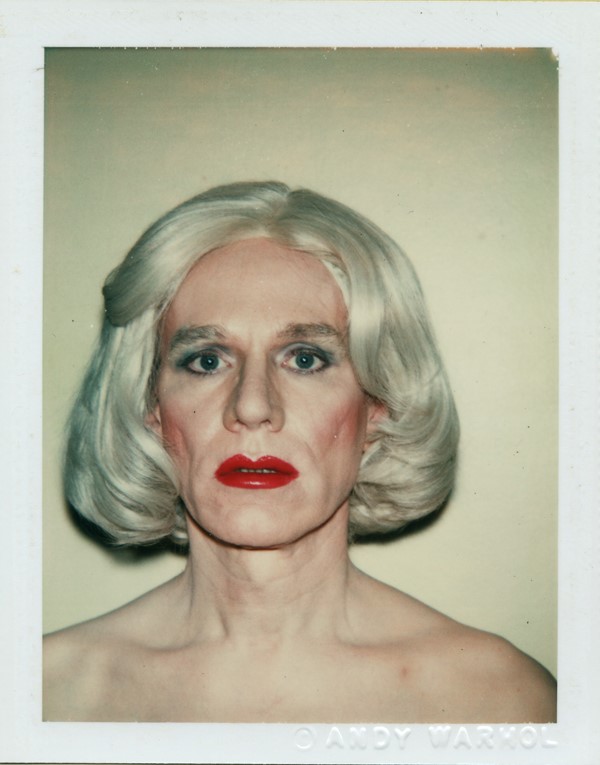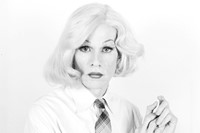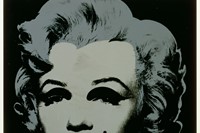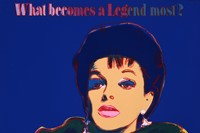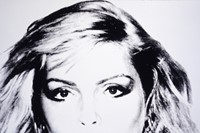Through his prolific career Andy Warhol “Pope of Pop” captured as wide ranging subjects as cans of Campbell’s soup and Coca-Cola bottles to celebrities Muhammad Ali and Elvis Presley, in his signature silk screen, painting and photographic processes.
Through his prolific career, Andy Warhol “Pope of Pop” captured as wide ranging subjects as cans of Campbell’s soup and Coca-Cola bottles to celebrities Muhammad Ali and Elvis Presley, in his signature silk screen, painting and photographic processes. This month however sees the focus of a newly curated exhibition at The Lowry turn to 'The Diva': a usually alluring performer or personality, admired icon and ego. Warhol and the Diva showcases an unprecedented collection of some of the world’s most iconic figures of the 20th century, immortalised by Warhol as well as the artist’s transformation into his own glamorous inner diva, within his self-portrait in drag photographs. Whilst some of Warhol’s most instantly recognisable stars of stage and screen – including Marilyn Monroe, Liza Minnelli, Debbie Harry and Mick Jagger – will be on show, rarely exhibited works of Pia Zadora, Jane Fonda and the artist (or artiste) himself will run alongside. Here, AnOther exclusively reveals two of these very images – Self-Portrait in Drag, 1981 and Andy Warhol, 1981 by Christopher Makos – and also takes time out with The Lowry’s Curator of Special Exhibitions, Kate Farrell to gain a further insight into this unique exposé.
How did the idea for this exhibition come about?
The exhibition came about initially by researching into the history of the diva in performance, and quite quickly it became apparent that Warhol’s portraits of performance figures could translate into an exhibition solely about Warhol’s divas – their ‘real’ and ‘performance’ personas or identity. As I researched potential material, I also came across a series of photographs of Warhol taken by his good friend Christopher Makos, where the artist had been glamourised into an exaggerated version of himself, wearing heavy make-up and a series of wigs. The title Warhol and the Diva then became even more relevant: describing the divas depicted within his work, and Warhol’s own inner diva.
Why did you see now as the fitting time to put on this show and why the Lowry?
This is a newly curated show that fits really neatly into The Lowry’s programming strand of performance based visual art exhibitions, as it focuses wholeheartedly on the essence of the performer and Warhol’s adoration for the icons that permeated his life and work. I also think that and I think it’s always a good time for a Warhol exhibition.
How hard was it to curate and select which artworks to showcase from Warhol's extensive portfolio?
We had a focused rationale for what we considered to be a ‘Diva’ in the context of the exhibition and within Warhol’s work – a revered, glamorous successful female (and sometimes male) performer – and because Warhol documented these personas so extensively it was easy to find many matches for this rationale. The Andy Warhol Museum in Pittsburgh have been extremely accommodating in allowing us to access their vast collection and the majority of loans have come from them.
Which is your favourite exhibit and why?
That’s a difficult one. The Liz Taylor work (on loan from The Figge Art Museum, Iowa) has extra resonance now following her sad death in March, so I think this will be a really important work for visitors as it’s now perhaps even more iconic. I also really love the Debbie Harry work, and of course the Marilyns.
Warhol’s artworks have had a continuing popularity in both the art world and public sphere – why do you think this is?
One of the descriptions of Warhol-revolutionary is so true and in some ways an understatement, as I think his work has a very rare quality which means it continues to feel like it’s been created for the generation within which it’s being viewed. Considering his portraits of the icons exhibited within Warhol and the Diva specifically, he created a visual language which tapped into that timeless Hollywood glamour and that’s something both within art history and popular culture that will never grow old.
What was the first Warhol image you came across and what kind of lasting memory did it leave with you?
I think a series of Marilyn prints at Tate Liverpool several years ago really brought home the fact that Warhol’s representation of the actress has become ‘the’ image people associate with her, and probably always will. He encapsulated her glamour within that portrait for generations to come and it became the blueprint for the portraits of other stars and socialites who wanted Warhol to create the same timeless beauty for themselves.
Who would you say is the Warhol equivalent in today’s times?
I think it’s difficult to compare anyone to Warhol and the impact he had, and continues to have both in the art world and within popular culture, but I suppose in terms of the popularisation of art in modern times, and the sheer breath of practice (as well as his penchant for the celebrity lifestyle) Damien Hirst would probably be the closest comparison in my opinion.
Warhol and the Diva runs from June 25 – September 25 at The Lowry, Salford Quays.
Text by Lucia Davies
